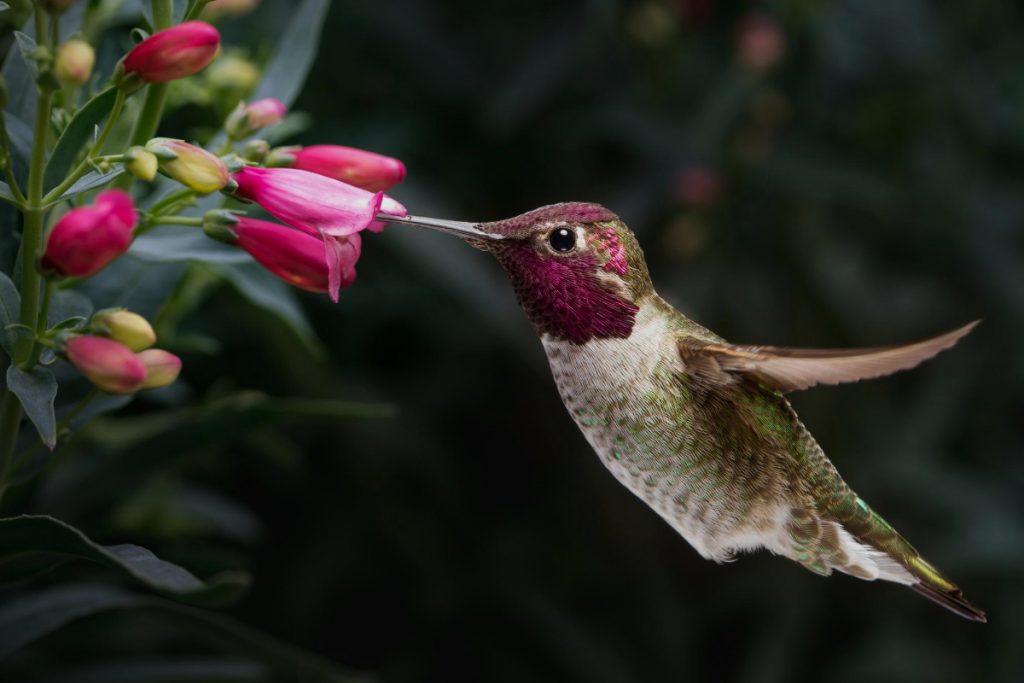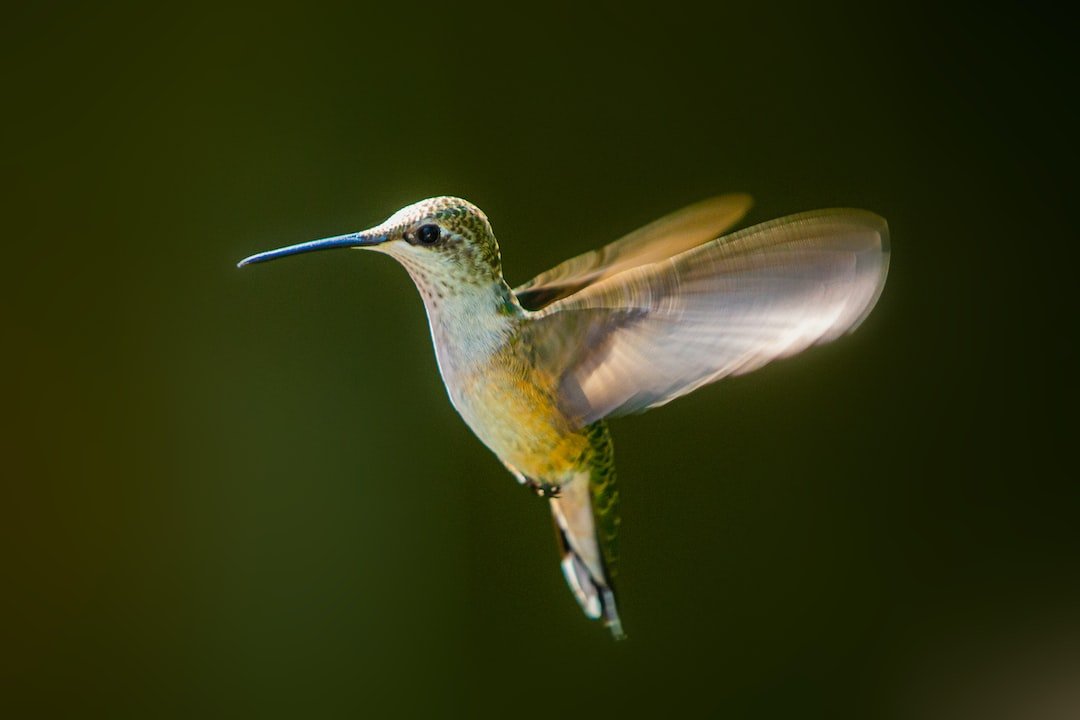Hummingbirds are some of the most unique and fascinating birds on the planet. With their bright colours and ability to hover, they are a sight to behold! But what exactly are hummingbirds, and what makes them so special?
In this article, we will explore all aspects of hummingbirds, from their anatomy, behaviour and habitats to their mating rituals and conservation status.
We will also discuss their importance to the environment and why they should be protected. By the end of this article, you will have a complete understanding of these incredible birds.
Key Takeaways
- Hummingbirds are small, colourful birds known for their ability to hover and fly backwards.
- There are over 300 species of hummingbirds found exclusively in the Americas.
- These birds play a crucial role in pollination and face threats from habitat loss and climate change.
- Conservation efforts, including creating hummingbird-friendly gardens, can help protect these remarkable birds.
Related Posts:
Best Hummingbird Feeders.
Hummingbird Feeders Comprehensive Guide.
How To Stop A Hummingbird Feeder From Leaking.

What Are Hummingbirds?
Hummingbirds belong to the family Trochilidae, comprising over 300 species. These remarkable birds are found exclusively in the Americas, ranging from Alaska to Tierra del Fuego. They inhabit diverse environments, including:
- Tropical rainforests
- Alpine Meadows
- Deserts.
Distinctive features of hummingbirds include:
- Tiny size: Most species measure between 7.5-13 cm (3-5 inches) in length.
- Iridescent plumage: Their feathers reflect light, creating brilliant, shimmering colours.
- Unique flight capabilities: They can hover, fly backwards, and reach speeds of up to 54 km/h (34 mph).
- Rapid wing beats: Some species can flap their wings up to 80 times per second!
Anatomy of a Hummingbird
Hummingbirds possess several anatomical adaptations that enable their extraordinary abilities:
- Long, slender bills: Perfect for reaching nectar deep within flowers
- Specialised tongue: Can extend beyond the beak to lap up nectar
- Powerful breast muscles: Account for about 30% of their body weight, allowing for incredible flight manoeuvrability
- Unique wing structure: Enables them to rotate their wings in a figure-eight pattern.
Behaviour and Habits
Hummingbirds lead incredibly active lives, with behaviours shaped by their high-energy needs and unique abilities.
Feeding Habits
Hummingbirds primarily feed on:
- Nectar: Their main energy source, obtained from flowers
- Insects: Provide essential proteins and fats
- Tree sap: An alternative energy source when nectar is scarce.
To maintain their rapid metabolism, hummingbirds may visit hundreds of flowers daily and consume up to 12 times their body weight in nectar!
Territorial Behaviour
Many hummingbird species are fiercely territorial, especially around food sources. They may engage in:
- Aerial chases
- Vocalizations to warn intruders
- Physical confrontations with other hummingbirds.
Mating and Nesting
Hummingbird mating rituals are often spectacular:
- Males perform elaborate courtship displays, including aerial acrobatics and vocalizations.
- Females build tiny, cup-shaped nests using spider silk, plant down, and lichen.
- Most species lay two eggs, which are incubated for 14-23 days.
- Chicks fledge after 18-30 days, depending on the species.
Note: Hummingbirds do not mate for life. Each hummingbird typically mates with multiple partners throughout their lifetime.
Conservation Status and Threats
While many hummingbird species are currently listed as ‘Least Concern’ by the IUCN, they face numerous threats:
- Habitat loss: Deforestation and urban development destroy crucial feeding and nesting areas.
- Climate change: Alters flowering patterns and migration routes.
- Pesticides: Reduce insect populations and may directly harm hummingbirds.
- Window collisions: A significant cause of mortality in urban areas.
Endangered Species
Some hummingbird species are at high risk of extinction, including:
- Esmeraldas Woodstar (Chaetocercus berlepschi): Critically Endangered
- Sapphire-bellied Hummingbird (Lepidopyga lilliae): Critically Endangered
- Glittering Starfrontlet (Coeligena orina): Endangered.
How do hummingbirds fly?
Hummingbirds are unique among birds for their ability to fly in every direction, including backward. Their wings beat at an incredible rate of up to 80 times per second, enabling them to hover and fly with great agility. They use a special adaptation called clap-and-fling: they first use their wings to clap together rapidly and then fling them open. This helps them generate lift more efficiently than other birds.
What is the lifespan of a hummingbird?
The lifespan of a hummingbird typically ranges from 3-5 years in the wild, although some individual birds have been known to live longer. In captivity, with proper care and nutrition, a hummingbird can live up to 8-10 years. Factors such as disease, predation, and environmental changes can significantly impact their lifespan.
What is the biggest threat to hummingbirds?
The biggest threat to hummingbirds is the destruction of their natural habitat due to human activities such as deforestation, urbanization, and farming. Climate change, pesticide use, and collisions with man-made structures also pose significant risks to hummingbird populations.
How You Can Help Hummingbirds
There are several ways to support hummingbird conservation:
- Create a hummingbird-friendly garden:
- Plant native, nectar-rich flowers
- Avoid using pesticides
- Provide a water source, such as a shallow birdbath
- Hang hummingbird feeders:
- Use a mixture of 1 part white sugar to 4 parts water
- Clean feeders regularly to prevent mould growth
- Support conservation organisations:
- Donate to or volunteer with groups working to protect hummingbird habitats
- Reduce window collisions:
- Apply window decals or screens to make glass more visible to birds
- Spread awareness:
- Share information about hummingbirds and their conservation needs with others.
Conclusion
Hummingbirds are truly remarkable birds that play a vital role in our ecosystems. Their unique adaptations and behaviours make them not only fascinating to observe but also crucial pollinators for many plant species.
By understanding and appreciating these tiny marvels, we can better protect them and their habitats for future generations to enjoy.
What steps will you take to help hummingbirds in your area? Share your ideas and experiences in the comments below!
Thank you for reading this guide to hummingbirds. If you found it helpful, please consider sharing it with fellow nature enthusiasts to spread awareness about these incredible birds.
Hummingbirds FAQs (Frequently Asked Questions)
Q: What is the smallest species of hummingbird?
A: The smallest hummingbird species is the Bee Hummingbird (Mellisuga helenae), native to Cuba. It measures just 5-6 cm in length and weighs less than 2 grams, making it the smallest known bird in the world.
Q: Can hummingbirds see colours?
A: Yes, hummingbirds can see colours. In fact, they have excellent colour vision and can see a broader spectrum of colours than humans, including ultraviolet light. This ability helps them identify nectar-rich flowers.
Q: How fast can a hummingbird’s Heart Beat?
A: A hummingbird’s heart can beat up to 1,260 times per minute during flight. At rest, their heart rate can slow down to about 250 beats per minute.
Q: Do hummingbirds sleep?
A: Yes, hummingbirds do sleep. They enter a state called torpor, a type of deep sleep where their metabolic rate slows down significantly. During torpor, their heart rate and body temperature drop, conserving energy.
Q: Can hummingbirds walk or hop?
A: Hummingbirds have very weak legs and can’t walk or hop. Their feet are mainly used for perching and scratching. They rely on their flying abilities for most movement, even for short distances.
Q: How do hummingbirds drink nectar?
A: Hummingbirds drink nectar by rapidly lapping it up with their long, forked tongues. Their tongues can flick in and out of their beaks up to 13 times per second, trapping nectar in tiny grooves along the edges.
Q: Do all hummingbirds migrate?
A: Not all hummingbirds migrate. While many species in North America do migrate to warmer climates during winter, some species in tropical regions stay in the same area year-round. The Ruby-throated Hummingbird, for example, migrates from North America to Central America each year.
Q: How long can a hummingbird’s bill grow?
A: The length of a hummingbird’s bill varies by species. The Sword-billed Hummingbird (Ensifera ensifera) has the longest bill in relation to body size of any bird, with a bill that can grow up to 10 cm long – longer than its body!
Q: Can hummingbirds eat anything other than nectar?
A: While nectar is their primary food source, hummingbirds also eat small insects and spiders for protein. Some species will also eat tree sap, pollen, and even ashes or sand for minerals.
Q: How do hummingbirds contribute to the ecosystem?
A: Hummingbirds play a crucial role in pollination. As they feed on nectar, they transfer pollen from one flower to another, helping in plant reproduction. Some plant species have co-evolved with hummingbirds and rely almost exclusively on them for pollination.
References:
- About Hummingbird (Wikipedia).
- Greenewalt, C. H. (1960). Hummingbirds. New York: Doubleday (Google Scholar).
Bee Hummingbird: link.
